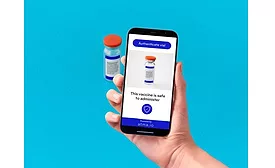Home » Keywords: » sealants in medical/dental
Items Tagged with 'sealants in medical/dental'
ARTICLES
The implications of this research are significant, particularly in biomedical applications such as bandages, health monitoring sensors for moist skin, and advanced adhesives that could replace sutures.
Read More
Demand for Medical Adhesives Increases
Because they offer solutions for wound care, wearable medical devices, and scar therapy, demand for soft-skin adhesives is expected to grow.
December 18, 2023
Three Silicone Adhesives That Give Your Application the Advantage
By understanding the advantages and disadvantages of silicone PSAs, SSAs, and film adhesives, manufacturers can select the formulation that maximizes component or device success.
June 22, 2023
Mussels-Inspired Injectable Bioglue Seals Surgical Wounds
Researchers develop biodegradable hydrogel adhesive for sealing internal soft-tissue incisions using inspiration from nature.
May 15, 2023
Keep the info flowing with our newsletters!
Get the latest industry updates tailored your way.
JOIN TODAY!Copyright ©2025. All Rights Reserved BNP Media.
Design, CMS, Hosting & Web Development :: ePublishing

.webp?height=168&t=1676382930&width=275)




.webp?height=168&t=1709670950&width=275)


